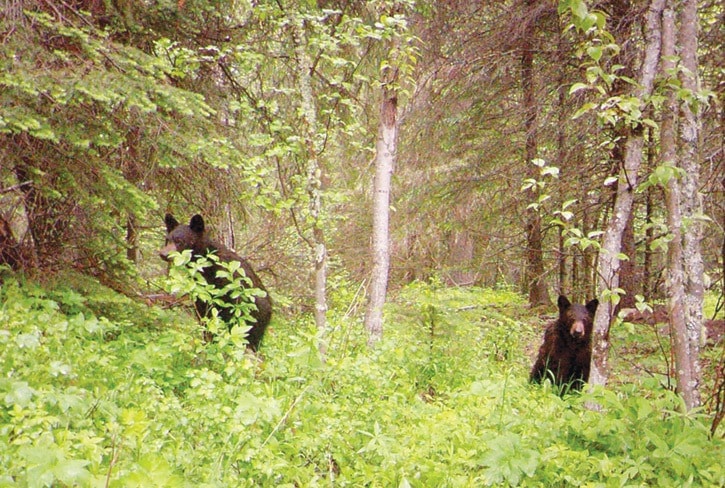Wildlife sightings in and around the vicinity of Gibraltar Mine are monitored and tracked as part of an informal monitoring program initiated and maintained by the Environmental Department. Tracking wildlife usage amongst the terrain in and around the mine site also assists with baseline data required to meet our Towards Sustainable Mining obligations. Large carnivores such as black bear, cougars and wolves have been observed within the operational footprint, as well as numerous smaller mammals such as coyote, lynx and snowshoe hare. Additionally, cameras have captured multiple images of moose and deer with accompanying offspring.
Game camera observations are recorded in GIS and provide active monitoring for areas of interest (wetlands, reclamation features, various stand types, etc.), enhancing site understanding of wildlife utilization in different habitat types. Observations from the wildlife monitoring program are used to inform management decisions around landform design and suitability of reclamation prescriptions, as well as evaluate the use of current habitat enhancements. Where appropriate, Gibraltar Mine conducts reclamation activities intended to increase habitat functionality and the amount of wildlife habitat available for use and forage.
Wildlife crossings, where required, have been established over permanent pipelines to ensure travel corridors are available and to minimize the impacts to migration routes. Crossover structure locations are chosen based on observations sightings, tracks and scat made in the field. When practical, pipeline routes are walked in the winter months to observe tracks and signs of wildlife. The information is used to determine if and where additional crossings are warranted.
Moving forward, cameras will continue to be placed in areas of interest around the site. Images from the cameras will be downloaded and analyzed to assess utilization throughout the four seasons. The intent is to increase our understanding of how often a particular species utilizes each area type to enhance reclamation prescriptions. Furthermore, we can monitor active reclamation areas for species usage over time to gauge the success of reclaimed areas.
It is anticipated that the wildlife camera program will expand in 2017 to incorporate more observation points. The Environmental Department is very happy with the results of the wildlife monitoring program to date and has observed a variety of healthy, unique animals. Employees will soon see the 20 best pictures of 2016 on the TV monitors on site. Another initiative for 2017 will be working with the Williams Lake Field Naturalists and completing annual bird counts.
- Courtesy of Brian Battison, vice-president of corporate affairs at Taseko Mines Ltd.
